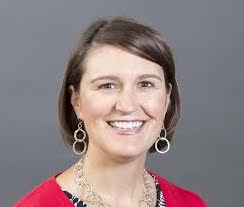Planned giving in a pandemic

The Covid-19 pandemic has driven a significant rise in end-of-life planning, with many sources showing a 30-45% increase in the creation of wills, trusts, and estate plans. As a consequence, nonprofits are reporting a significant increase in planned gifts.
Creative Fundraising Advisors President Paul Johnson sat down with Theresa Gienapp, Director of Planned Giving at Macalester College, to analyze this important issue, and to determine what an organization can do to make sure it is prepared for these vital, sensitive conversations.
“In the past, planned gifts were usually triggered by a major life event — a marriage, divorce, change in job, the death of a family member,” says Johnson. “But this once-in-a-hundred-years pandemic is stimulating a whole new level of interest in planning for end-of-life and for helping beloved organizations that are suddenly under stress.”
Gienapp agrees. “I have definitely seen, in the face of hundreds of thousands of deaths in this country, that people are interested in tidying up their financial affairs. An alum called it ‘Marie Kondo-ing your estate,’ which certainly makes sense.”
In this rapidly changing environment, how can fundraising professionals be a respectful and helpful part of planned giving? The answer lies in deep and authentic relationships, says Johnson.
AN OVERVIEW OF PLANNED GIVING
“The traditional definition of planned giving is naming the people and organizations you want to receive your assets—money, property, a portion of your estate—upon your death,” says Johnson. “But I think of planned giving more as the result of an organization building an authentic, long-term relationship with a donor. It’s about planning your gift to the organizations during your lifetime and after you die.”
Johnson notes that planned gifts come in many forms. Some are bequests from a donor designating a charitable organization in a will. Others are annuities or trusts that provide income while a person is living, with the remainder going to a charitable organization upon the person’s death.
“The profile of a planned giving donor can be quite different than a major gifts donor,” explains Johnson. “Your really great planned giving prospect might be the retired schoolteacher who doesn’t have cash but does have a retirement account and home, assets that can be transferred to you upon a person’s death.”
Planned giving also allows someone to participate in a campaign in a much more significant way than a cash gift might allow. For example, CFA recently consulted on the Dodge Nature Center campaign and the largest gift was a planned gift, which allowed the organization and the donor to think big, says Johnson. “That planned gift had a powerful effect on Dodge’s ability to plan for generations to come.”
Gienapp suggests that Macalester College has found that 50th reunions are a time of reflection and opportunity to talk about planned giving. “Our class of 1970, for example, felt strongly that they still had things they wanted to do, that they wanted to make a difference. It was a good time for a planned giving conversation.”
GETTING STARTED
Johnson emphasizes that, first and foremost, planned giving must be an extension of a major gifts program. “While some nonprofits are not large enough to have a planned giving director, every major gift officer needs to be well-versed in planned giving mechanisms to be of service to donors.”
Second, Johnson suggests that if an organization has not yet started a program, it is never too late. Having a very simple, basic planned giving circle or society is a good place to begin. That forces an organization to set up its internal systems to accept planned gifts and it creates a public-facing recognition of donors. If your organization lacks expertise or mechanisms to accept planned gifts, Johnson recommends partnering with a local bank or community foundation that can provide the service with integrity.
Third, a development officer must assess when the time is appropriate to have a planned giving conversation. “The most likely candidates are people who have a long-term interest in the mission and well-being of the organization,” says Johnson. He also notes that it is just fine if people are reluctant to provide an exact dollar amount of a planned gift or simply not know what the value will be. “You really just want the donor to let you know that your organization is included in his or her or their estate plan.” Gienapp says that research shows once a donor has documented a planned gift, the person’s annual giving often increases significantly.
Gienapp acknowledges that planned giving conversations can be anxiety-producing. “It’s about money, and then you layer in death. That can be awkward. You have to listen to cues to understand where people are, and you have to keep your eye on helping them think about what they would love to see grow and flourish at your organization.”
CHARACTERISTICS OF A STRONG PLANNED GIVING PROGRAM
Organizations that have successful planned giving programs are those who have set up the internal systems and processes to identify and steward long-term relationships. The emphasis is on long-term, says Johnson. “I once worked at an organization that was the recipient of a $500 million gift. This donor was stewarded as a major gift donor for 27 years.”
Gienapp emphasizes the need to stay focused on impact. “You’re helping them plan for a gift after they are gone, but you’re consistently stewarding them to show the impact of donors.”
Establishing clear gift acceptance policies — what you will and will not accept — is vital, Gienapp says. “Will you take assets related to tobacco or fossil fuels, for example? These are complicated decisions an organization must address up front. A donor’s values and an organization’s values must align.”
A strong planned giving program is not possible without excellent documentation and recordkeeping. “You have to have contact reports and a CRM system that allows you to track well,” says Gienapp.
Johnson has seen that an organization’s board/trustees also play a crucial role. “You want your current board members to include you in their estate and for them to be tuned into planned giving as a long-term strategy for the organization.”
THE BENEFITS OF PLANNED GIVING – FOR THE DONOR
Planned giving is often positioned as a benefit for the organization, which it is. But Johnson says the most important point of planned giving is that the donor can have a say in the organization’s future. “It is vital that we think about the legacy a person wants to leave. A planned gift says, ‘I care about this institution and I want it to thrive well into the future.’”

Paul Johnson
Creative Fundraising Advisors
Paul is the founder of Creative Fundraising Advisors based in Saint Paul, MN.
[email protected]

Theresa Gienapp
Macalester College
Theresa is the director of planned giving at Macalester College in Saint Paul, MN.
